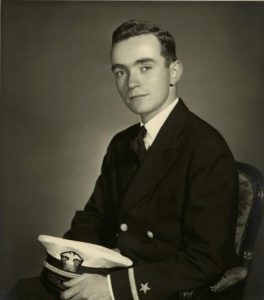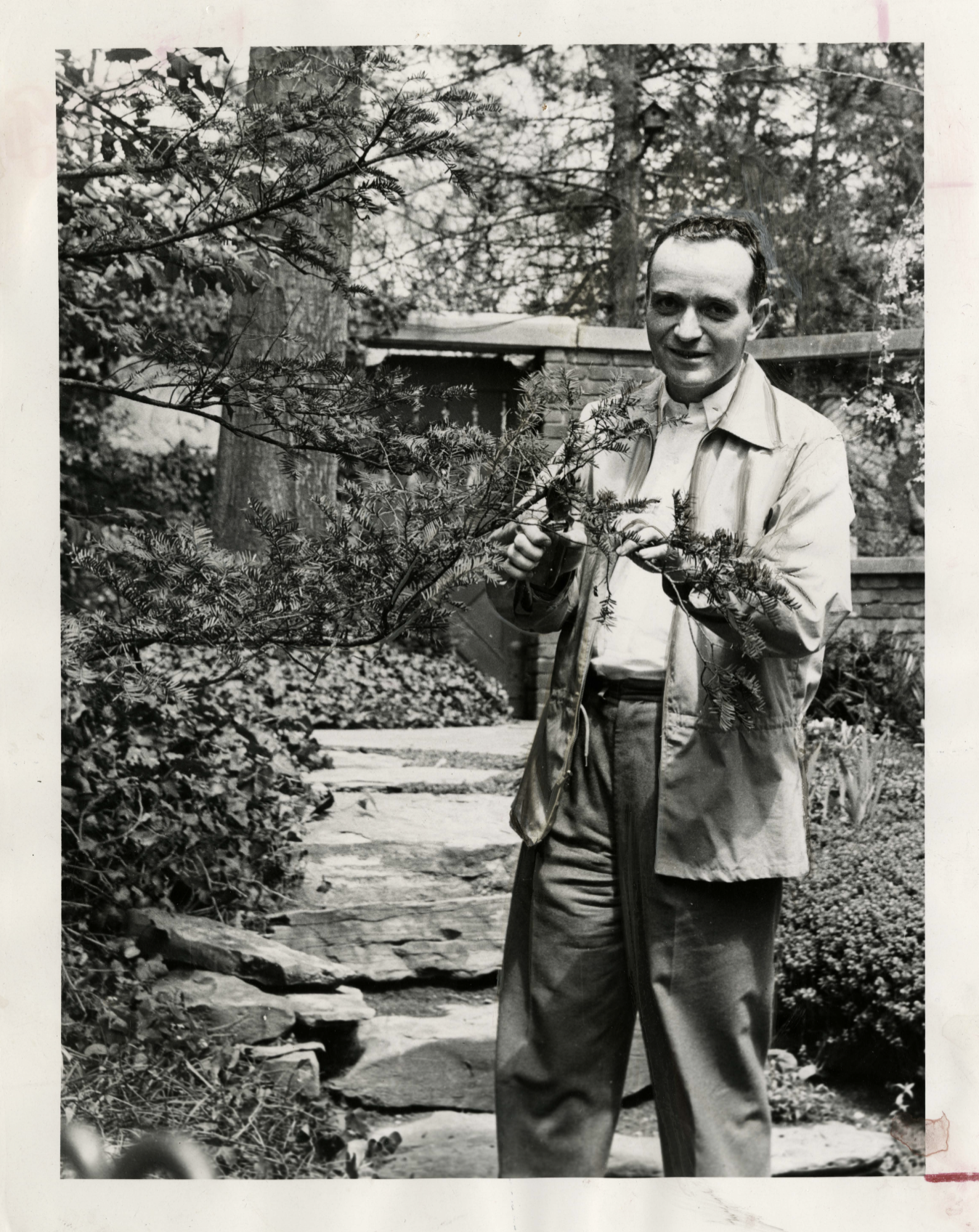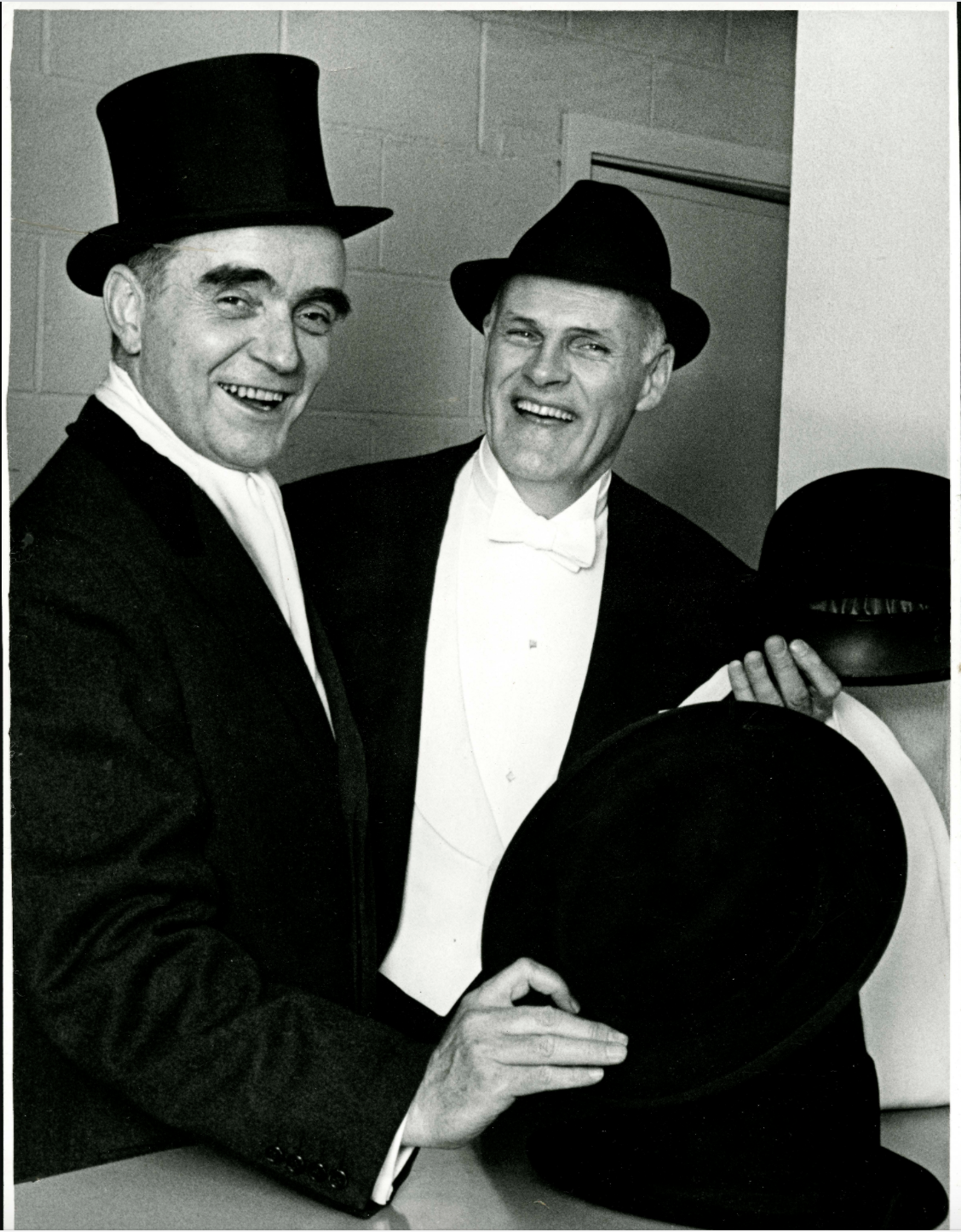
Photo info ...
Credit: Indiana Historical SocietyView Source
(Feb. 18, 1917 – Nov. 3, 2000). Allen Clowes was the son of Indianapolis leader in education, arts, and society, and , eminent chemist and research director of the . His sense of community service, philanthropy, and love of the arts emerged as a reflection of his family’s wealth and values.

Born in Buffalo, New York, Clowes moved with his parents to Indianapolis at age two. He remained a loyal Indianapolis resident throughout his life. He was a graduate of ’s first class and studied at Park School. He attended Harvard University (BA, 1939, and MBA, 1942). He was a naval officer during World War II. , , and awarded him honorary doctorates.
As a leader and philanthropist, his impact on Indianapolis’s cultural and educational scene was marked and constant. He traveled widely, spent summers in Woods Hole, Massachusetts (first at the family home, Easterly, and then at his own home, Whitehill), and briefly lived in New York City while an investment executive for Brown Brothers Harriman. His Indianapolis residence, Westerley, was the Clowes family estate, and the original repository for the significant Clowes Collection of Old Masters’ paintings, later loaned/gifted to the (IMA) and displayed in its Clowes Pavilion, erected for that purpose.

Clowes loved art, music, horticulture, and community life. He had an office at the IMA and functioned as an administrator and curator of the Clowes Collection. He was also the president and treasurer of the , the family charitable foundation, and created the , founded during his lifetime (1990) and fully funded by his estate (2002). It is a major philanthropic foundation in the city that focuses on arts and humanities.
His business and executive career included specialization in oil investments and executive leadership of philanthropic and community/arts organizations. He served and was an officer on several boards for arts, educational, museum, cultural, and community organizations (including the , the , the , , IMA, , and , and schools. A member of Trinity Episcopal Church, he and his family contributed to this unique example of English ecclesiastical architecture. He also took leadership in the construction of at Butler University.
His honors included being a fellow of New York’s Metropolitan Museum of Art and a Sagamore of the Wabash. His spirit was strengthened by a love of gardens and horticulture, important friendships, and the city of Indianapolis itself. He was committed to wholeness and beauty in the urban setting as demonstrated in his opposition to the mid-city interstate loop plan in the late 1960s. When tested by challenges and disappointments, he persevered leaving an enduring legacy of philanthropy and care for Indianapolis and of the encouragement of beauty and the human spirit.

Help improve this entry
Contribute information, offer corrections, suggest images.
You can also recommend new entries related to this topic.